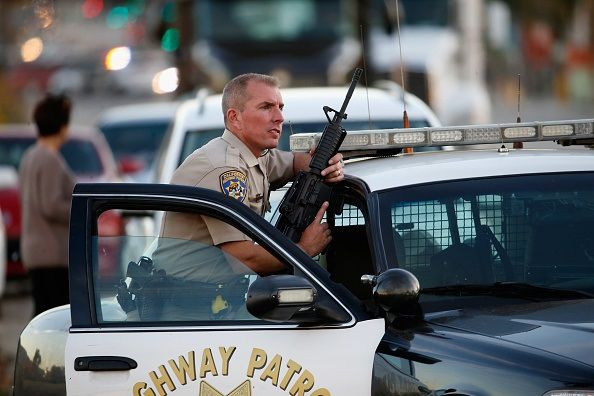San Bernardino Shooting: How To Define Domestic Terrorism In An Era Of Mass Shootings And Hate Groups

After Wednesday's mass shooting in San Bernardino, California, police confirmed that there were as many as three suspects, one of whom was killed and two of whom were in a standoff with police Wednesday afternoon local time. “At a minimum ... we have a domestic terrorism situation," San Bernardino police Chief Jarrod Burguan told reporters.
So far, descriptions of the suspects -- let alone their motives -- are scant. Some eyewitnesses reported that the men wore ski masks and body armor as they carried out the brutal attack at the Inland Regional Center, a social services facility. In the hours after the shooting, police combed the area, shut down government buildings, and urged local residents to lock their doors.
Despite the many unknown factors in the shooting, observers seized on Burguan’s comment that this was an act of domestic terrorism. Because the suspects chose a nonprofit, government-funded agency -- and police seemed concerned that another government building might be the next target -- the shooting brought to mind previous domestic terror attacks, perhaps most notably the 1995 Oklahoma City bombing.
12 dead from attack on center for disabled kids in #SanBernadino. Another attack on a women's clinic in Houston. Domestic terrorism is REAL.
— Amanda Reid (@amandareid) December 2, 2015Local police enforcement is calling it domestic terrorism. Of course it is.
— Paige DeVilbiss (@AmourDeVelo) December 2, 2015Will never understand why they won't classify these mass shootings acts of domestic terrorism...
— Azor Ahai (@MrThatsLife) December 2, 2015With a staff of nearly 700, the Inland Regional Center is a nonprofit agency that works with more than 30,200 people with developmental disabilities “to normalize” their lives by “facilitating needed supports for them,” according to the agency’s website.
This year alone, there have been 351 mass shootings in the United States. So what, exactly, turns a mass shooting into an act of domestic terror?
According to the FBI, “domestic terrorism” is defined by several characteristics, but the most salient detail is that the attack is used “to intimidate or coerce a civilian population ... to influence the policy of a government by intimidation or coercion ... or to affect the conduct of a government by mass destruction, assassination, or kidnapping.”
While police hunted for the suspects in Wednesday’s attack, experts cautioned that it was too soon to ascribe particular motivations or labels to the shooting.

However, it is worth noting that the “antigovernment ‘Patriot’ movement” is on the rise.
In 2013, the Southern Poverty Law Center set out to document a precipitous rise in these American hate groups. Their findings were disturbing. In 2000, the SPLC documented 607 hate groups. By 2012, that number had grown to 1,007. The SPLC also found that in 2000, there were 72 far-right militia groups, and 194 armed patriot groups. By 2012, those numbers increased to 321, and 1,360, respectively.
While the motivations of the San Bernardino shooters were still unknown, what is known is that acts of domestic terror -- as defined by the FBI -- appear to be on the rise. Since the Oklahoma City bombing, there have been “over 100 domestic radical-right plots, conspiracies and racist rampages,” Mark Potok, a senior fellow at the SPLC, noted in the report.
© Copyright IBTimes 2025. All rights reserved.






















